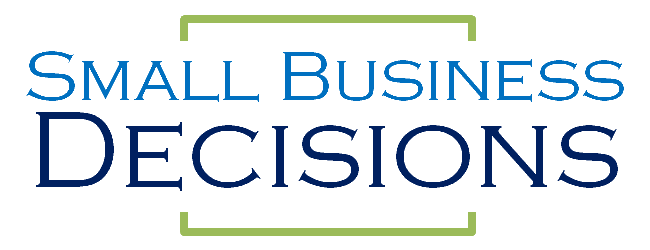How do I get enough money to get my business going?
This is one of the most common issues for business owners. All of the rage in tech businesses is around getting investor funding and seed rounds and all of that… but that is not actually the most common type of funding or even the best in many situations. Your funding methods are going to be based on your product, business type, and financial situation.
There are three primary categories of business/startup funding:
- Personal Funding/Bootstrapping
- Investor/Equity Funding
- Debt Funding/Loans
Personal Funding/Bootstrapping
This is the BEST type of funding. It’s essentially no funding at all! But it’s not ‘sexy’. The best part of having no need for funding is that you aren’t giving away any equity so you can have all of the profits from your work. This is the lowest amount of risk. If the business fails, you’re not left with any outstanding debt. This also tends to make you a more conservative spender, which is a very good thing.
The ideal situation for this to work is if you can negotiate a contract for incoming work and you can do that work with your existing resources. The primary feature of something like this is that there is limited “investment” needed to begin producing value to your customer. There are many business opportunities that use this model, such as drop-shipping e-stores, contract expertise, contract labor and so forth.
In the case that you HAVE to purchase some equipment or resources, you can purchase them on the cheap (craigslist, eBay, yard sales) until you can save enough of your business income to upgrade as you go. The advantage of this ‘upgrade as you go’ approach is that you will figure out from experience if you really need that shiny new tractor the salesman says you can’t live without.
Investor/Equity Funding
This type of funding is best for companies who have to be at scale in order to make any money. Facebook, Google, AngiesList, Amazon, etc. All of these tech companies needed to have a significant user base before they could feasibly make any money. That means a free product or losing money until they hit scale and can start their journey to breakeven. Alternatively, if you have a product that will take two or three years to develop and you need to hire an army of coders and scientists to pull it off, you might be able to use this method.
The advantage of this method is that you don’t have to personally guarantee any of your investor’s money. If the venture fails, the business goes under, they’re only entitled to the assets of the company. For this reason, due to high risk, Venture Capitalists and founders tend to require a fairly significant portion of equity ownership. Which means that even though you get a nice cushion of money, you lose out on a fairly significant portion of your future profits because you have to pay your investors for taking a risk on you.
Debt Funding/Loans
This type of funding is unavoidable in many situations and is probably the most common for asset and capital expense driven ventures. The driving factor here is that banks and lenders are all somewhat risk-averse and conservative. A good example of when lending is the best is a real-estate development venture where there are specific assets which are tied to the money at all times. Another example is if you are purchasing a piece of equipment such as a tractor or semi-truck which the bank can use as collateral to recover a portion of their money.
In most cases funding a startup with debt will require a personal guarantee. The bank is requiring you to negate your corporate limits of liability. This is one of the few cases where having a legal entity will not protect your personal assets from business default. This might also look like getting a second mortgage to fund your business. Be VERY cautious in this situation. Thousands of business owners have lost their homes or had to spend years paying back failed business debts. Debt funding is usually the worst option from a personal risk perspective.


